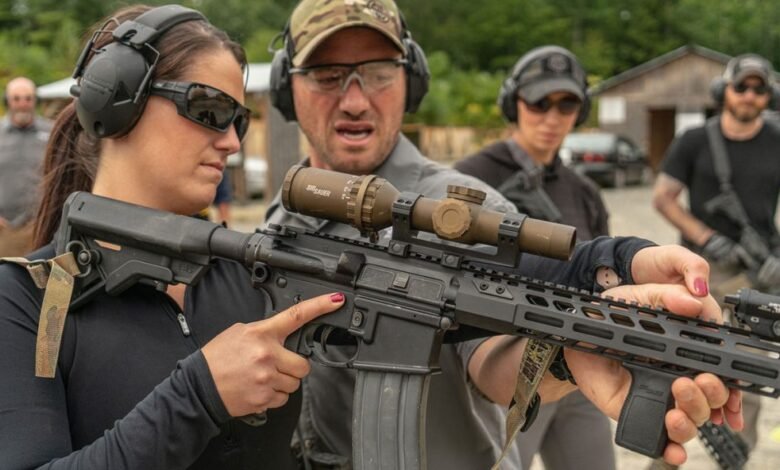Essential Theatrical Firearms Training Techniques for Actors

Acting with firearms isn’t just about looking cool on stage or screen—it’s about safety, authenticity, and delivering a believable performance. Whether you’re an aspiring actor or a seasoned professional, understanding theatrical firearms training techniques is crucial. In this guide, we’ll delve into essential techniques, safety protocols, and tips to enhance your performance.
When it comes to theatrical productions, accuracy and realism can make or break a performance. This is especially true when firearms are involved. Proper training ensures that actors not only look the part but also handle weapons safely. By attending a reputable theatrical firearms training academy, you can gain the skills needed to perform convincingly and safely.
Basics of Firearms Handling
Safety First
Safety should always be the top priority when handling firearms, even if they’re just props. Before you even touch a weapon, understand the fundamental safety rules:
- Treat every firearm as if it’s loaded.
- Never point a firearm at anything you don’t intend to shoot.
- Keep your finger off the trigger until you’re ready to fire.
- Be aware of your surroundings and what lies beyond your target.
Familiarising Yourself with Firearms
To portray a character authentically, you need to be comfortable with the weapon you’re using. Spend time getting to know the firearm—its weight, how it feels, and how it operates. This familiarity will translate into a more natural performance.
Mastering the Techniques
Proper Grip and Stance
The way you hold and stand with a firearm affects your performance. A proper grip and stance ensure stability and control, making your actions look more realistic. Practice these basics until they become second nature.
Aiming and Shooting
Even if you’re not firing live rounds, knowing how to aim and shoot correctly is essential. It adds to the realism and helps you react naturally to your surroundings. Practice aiming at targets and simulate shooting to improve your muscle memory.
Incorporating Movement
Dynamic Movements with Firearms
Actors often need to move while holding or aiming a firearm. Practice moving smoothly while maintaining control over your weapon. This includes walking, running, and transitioning between positions.
Transitioning Between Targets
In action scenes, you might need to switch your aim quickly between multiple targets. Practice transitioning your focus and firearm between different points to create fluid and convincing movements.
Enhancing Performance through Training
Working with Directors and Choreographers
Collaborate closely with your directors and choreographers to understand their vision for the scene. They can provide valuable feedback on your performance and suggest adjustments to improve authenticity.
Rehearsing with Co-Actors
Rehearsals are vital for ensuring everyone is on the same page. Practice scenes with your co-actors to build chemistry and ensure your movements are synchronised. This collaboration enhances the overall performance.
Using Props Effectively
Realistic Firearm Props
Choose props that closely resemble real firearms. The weight and appearance of the prop can significantly impact your performance. Ensure the prop is safe and approved for theatrical use.
Incorporating Sound and Visual Effects
Sound and visual effects add realism to your performance. Work with your production team to ensure these effects are timed perfectly with your actions. This synchronisation enhances the believability of your character.
Advanced Training Techniques
Simulating Combat Scenarios
Advanced training often involves simulating combat scenarios. These exercises help actors react instinctively and perform under pressure. Practice various scenarios to build confidence and improve your skills.
Psychological Preparation
Handling firearms on stage or screen can be stressful. Psychological preparation helps actors remain calm and focused. Techniques such as visualisation and breathing exercises can be beneficial.
Role of Military Expertise in Training
Learning from Experts
Incorporating military expertise into theatrical firearms training brings a high level of authenticity. Many training academies employ instructors with military backgrounds who can provide invaluable insights and techniques.
Real-Life Experience
Instructors with real-life combat experience bring a wealth of knowledge to the training process. Their practical tips and stories can enhance your understanding and improve your performance.
Continuing Education and Practice
Staying Updated
Theatrical firearms training is an ongoing process. Stay updated with the latest techniques and safety protocols by attending workshops and refresher courses. Continuous learning ensures you remain proficient and safe.
Practicing Regularly
Like any skill, regular practice is key to maintaining proficiency. Set aside time to practice your firearms handling and movement techniques. Consistent practice helps build muscle memory and confidence.
Conclusion
Theatrical firearms training is essential for any actor involved in action-packed roles. By prioritising safety, mastering techniques, and continuously practicing, you can deliver authentic and compelling performances. Remember, the goal is not just to handle firearms convincingly but to do so safely and responsibly. So, invest in quality training, collaborate with your team, and keep honing your skills to elevate your acting career.
